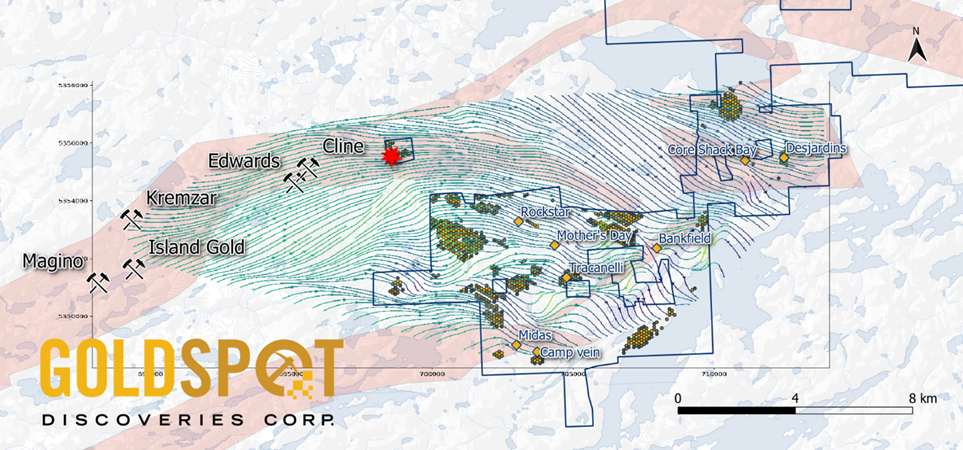Structural geology analytics
RSC applies machine learning algorithms to understand the structural controls on mineralisation, at local or regional scale, to better inform exploration for both greenfield and brownfield situations.
Often, conventionally collected structural geology data (e.g. those collected from drill core or field mapping) cannot be directly used for numerical interpolation or machine learning. However, after data preparation and processing, machine learning algorithms can be successfully applied to turn sparse structural data into 2D maps or 3D deformation domains.
Application example
Machine learning tools can be applied to identify zones of a subtle low magnetic signal adjacent to fault and splay structures where silicification can result in localised magnetic destruction. It generates a spatially unbiased evaluation of magnetic survey data, enabling identification of small linear trends or weak magnetic lows, too subtle for the biased human eye to recognise.
These linear zones of slightly elevated topography, associated with silicification hardening of the host rock, create a positive weathering effect, and can be further investigated and refined using available Lidar data. Machine learning can identify linear zones of subtle (less than 1 m) elevation increase relative to the surrounding land.



